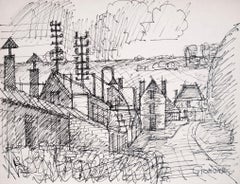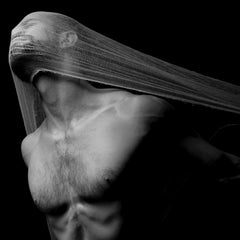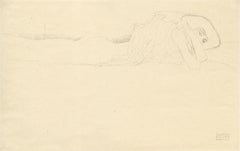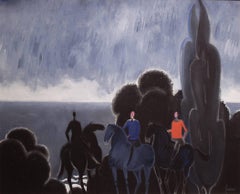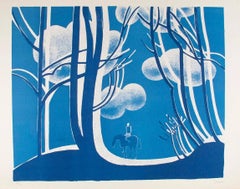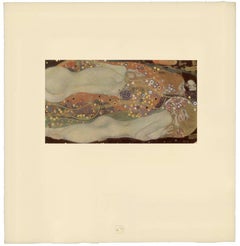Carol S. Pylant
Trilogy (Self Portrait, 3 Ages)
Oil on Panel
30h x 36w in
76.20h x 91.44w cm
CSP051
Resume
Artist / Emeritus Professor, University of Wisconsin-Madison
Education
1979 M.F.A. Painting, Wayne State University, Detroit, MI
1977 B.F.A. Painting, Wayne State University, Detroit, MI
Academic Appointments
1996 - 2011 Professor, University of Wisconsin-Madison
1991-96 Associate Professor, University of Wisconsin-Madison
1987-91 Assistant Professor, University of Wisconsin-Madison
1985 Instructor, Simmons College, Boston, MA
1984 Instructor, Art Institute of Boston, Boston, MA
1984 Instructor, DeCordova Museum and School, Lincoln, MA
1984 Instructor, Brookline Arts Center, Brookline, MA
1982-84 Assistant Professor, California State University, Long Beach, CA
1978-82 Instructor, Wayne State University, Detroit, MI
International Teaching
2011 Professor, UW- Madison, Villa Corsi Salviati, Sesto-Fiorentino, Italy
2006,7 Visiting Affiliate Professor, Santa Reparata International School of Art, Florence, Italy
International Artist Residencies
2017 Fundacio J. Llorens Artigas, Barcelona, (Gallifa) Spain
2015 Fundacio J. Llorens Artigas, Barcelona, (Gallifa) Spain
2002 Fundacio J. Llorens Artigas, Barcelona, (Gallifa) Spain
1990 The Tyrone Guthrie Center, Co. Monaghan, Ireland
1990 Oberpfalzer Kunstlerhaus,Schwandorf/Fromberg, West Germany
1987 Rockefeller Foundation Residency Fellowship, Bellagio, Italy
1987 The Karolyi Foundation, Vence, France
International Research Awards
2010 Faculty Research Fellowship, UW-Madison, "Villa di Livia Frescos, Museo Nazionale, Rome, Italy"
2005 Faculty Research Fellowship, UW-Madison, "Romanesque Art in France"
2004 Faculty Research Fellowship, UW-Madison, "Paintings Inspired by Romanesque Art in France"
2002 Faculty Research Fellowship, UW-Madison, "Pagan or Christian, Romanesque Art in Spain"
1998 Faculty Research Fellowship, UW-Madison, "Paintings of Neolithic Monuments in Brittany"
1996-7 Vilas Associate Award, University of Wisconsin System, "Paintings of Prehistoric Stone Circles, Ireland and the British Isles
1995 Faculty Research Fellowship, UW-Madison, "Paintings of Celtic Ceremonial Sites in Ireland and the British Isles"
1993 Faculty Research Fellowship, UW-Madison, "Egg Tempera Paintings in Florence, Italy"
1992 Faculty Research Fellowship, UW-Madison, "Paintings of Ireland"
1990 Faculty Research Fellowship, UW-Madison, "Figure and Environment: Ireland"
1989 Faculty Research Fellowship, UW-Madison, "Figure and Environment Painting: Germany"
1988 Faculty Research Fellowship, UW-Madison, "Figure and Landscape Painting: Umbria, Italy"
Other Awards
2008 Faculty Research Fellowship, UW-Madison
2007 Sabbatical, University of Wisconsin-Madison
2006 Faculty Research Fellowship, UW-Madison
2002-3 Emily Mead Baldwin-Bascom Named Professorship, University of Wisconsin
2000 Alumni Arts Achievement Award, Wayne State University Dept. of Art & Art History, Detroit, MI
2000 Faculty Research Fellowship, UW-Madison
1999 Faculty Research Fellowship, UW-Madison, "Past /Present: Paintings based on Celtic Imagery"
1999 Sabbatical, University of Wisconsin
1998 Wisconsin Arts Board Visual Arts Fellowship
1993 Faculty Development Grant, "Figurative Sculpture" University of
Wisconsin System
1991,93 Visual Arts Development Grant, The Wisconsin Arts Board
1989 Visual Arts Fellowship for Painting, The Wisconsin Arts Board, Madison, WI
1988 National Endowment for the Arts Regional Visual Arts Fellowship, Arts
Midwest
1986 Residency, Yaddo Corporation, Saratoga Springs, NY
1985 Residency, The Millay Colony for the Arts, Austerlitz, NY
1985 Residency, The Virginia Center for the Creative Arts, Sweet Briar, VA
1985 Milton and Sally Avery Award for Painting, The MacDowell Colony, Peterborough, NH
1984,5,6 Residency, The MacDowell Colony, Peterborough, NH
International Exhibitions
2010 Handmade Artist's Journals, Villa Corsi Salviati, Sesto-Fiorentino, Italy
2008 Oberpfalzer Kunstlerhaus, Schwandorf, Germany
1995-99 Jorgensen Fine Art, Dublin, Ireland
1994 "Exquisite Corpse" Transmission Gallery, Glasgow, Scotland
1992 "Faces and Places of Ireland" Ulster Bank, Ardara, Co. Donegal, Ireland
199l "Ardara Annual Show" Ardara, Co. Donegal, Ireland
1988 Oberpfalzer Kunstlerhaus, Schwandorf/Fromberg, West Germany
1988 "Art .... Made in USA" Stadische Galerie, Deutsch-Amerikanisches
Institut, Regensberg, West Germany
1987 Rockefeller Foundation Bellagio Study and Conference Center, Bellagio, Italy
One and Two Person Exhibitions
2005 Peltz Gallery, Milwaukee, WI
2001 Peltz Gallery, Milwaukee, WI
2000 Grace Chosy Gallery, Madison, WI
1999 Peltz Gallery, Milwaukee, WI (with John Sayers)
1998 Grace Chosy Gallery, Madison, WI
1997 Barbara Bunting Gallery, Royal Oak, MI
1993 Peltz Gallery, Milwaukee, WI
1993 Carey Gallery, Rochester, MI (with Jo Powers)
1993 J. Cacciola Galleries, New York, N.Y.
1990 Pennsylvania School of Art and Design Art Gallery, Lancaster,
PA (with Dan Gihooley)
1990 Hobe Sound Gallery, Brunswick, ME
1990 Levinson Kane Gallery, Boston, MA
1989 Bowdoin College Museum of Art, Bowdoin College, Brunswick, ME 1985 Trustman Gallery, Simmons College, Boston, MA
1982 Willis Gallery, Detroit, MI
Selected Group Exhibitions
2015 "Exquisite Corpse" Printworks Gallery, Chicago, IL
2014 "Non-Stop" Invitational, Train Depot, Madison, WI
1989-2014 Peltz Gallery, Milwaukee, WI
2012 "Invitational Alumni Exhibition", Elaine Jacobs Gallery, Wayne State University, Detroit, MI
2002-10 Grace Chosy Gallery, Madison, WI
2008 Chazen Museum of Art, University of Wisconsin-Madison
2008 Chapman Museum of Art, Myrtle Beach, NC
2007 Carthage College, Kenosha, WI
2007 Spartanburg Art Museum, Spartanburg, SC
2007 "Real and Imagined" Elaine Jacobs Gallery, Wayne State University, Detroit, MI
2003-7 Ann Nathan Gallery, Chicago, IL
2003 "The Exquisite Snake" Printworks Gallery, Chicago, IL
2003 Robert Kidd Gallery, Birmingham, MI
2002 Sonyia Zaks Gallery, Chicago, IL
1995 Butler Institute of American Art, Youngstown, OH
1994 Milwaukee Institute of Art & Design, Milwaukee, WI
1993 Madison Art Center, Madison, WI
1993 New York Arts Club, New York, N.Y.
1993 "Previews of l993" J. Cacciola Galleries, NY
1992 "Small Painting Exhibition" J. Cacciola Galleries, NY
1992 "Women in the Bowdoin Collection" Bowdoin College Museum of Art,
Brunswick, MA
1992 Steibel Modern, New York, NY
1984-91 Levinson Kane Gallery, Boston, MA
1986-7 Portraits Inc., New York, NY
1985-6 Kathryn Markel Gallery, New York, NY
1981-4 Frumkin and Struve Gallery, Chicago, IL
1984 "All California '84" Laguna Beach Museum of Art,
Laguna Beach, CA
1983 "Western States Figurative Realism" Cypress College Art Gallery,
Cypress, CA
1982 "Atlas Building Artists" Detroit Artists Market, Detroit, MI
1981 "Michigan Artists 80-81" Flint Institute of Art, Flint, MI
1981 Detroit Focus Gallery, Detroit, MI
1970 Detroit Art Institute, Detroit, MI
Public Collections
Heidelberg University, Tiffin, Ohio
Fundacio J. Llorens Artigas, Gallifa/Barcelona, Spain
American Express Corporation, New York, New York
Ulster Bank, Ardara, Co. Donegal, Ireland
Chazen Museum of Art, Madison, Wisconsin
The Block Museum of Northwestern University
Malden Public Library, Malden, Massachusetts
Bowdoin College Museum of Art, Brunswick, Maine
Oberpfalzer Kunstlerhaus, Schwandorf/Fromberg, Germany
Beach Museum of Art, Manhattan, Kansas
Virginia Center for the Creative Arts, Sweet Briar, Virginia
University of Wisconsin, The Graduate School, Madison, Wisconsin
Carol Pylant
Bibliography
2017 M is for Math, Museum and Manhattan Kansas, by Natasha Rozhkovskaya, Publisher: Tamara Rozhkovskaya Novosibrisk
2015 Exquisite Corpse, Printworks Gallery, Chicago, IL. (Exhibition catalogue)
2013 "Remarkable Women Exhibit" by Mary Louise Schumacher, Journal Sentinel, online, Milwaukee, WI, June 25
2012 "Peltz Gallery Celebrates Remarkable Women" by Peggy Sue Dunigan, The Sheperd Express, Milwaukee, WI, July 7
2008 "Teachers Who Can, UW Faculty..." by Jacob Stockinger, The Capital Times, Madison, WI, February
2007 "Art in Nature" by Bill Robbins, Kenosha News, Kenosha, WI, September 14
2004 "Ambition clothes 'Remarkable Women'" by James Auer, The Milwaukee Journal Sentinel, April 7
2004 "Waxing enthusiastic over 'Colors'" by James Auer, The Milwaukee Journal Sentinel, February 18
2003 "Remarkable Women Celebrated" by James Auer, The Milwaukee Journal Sentinel, March
2003 "Art Lesson" by Jennifer Smith, Isthmus, Madison, WI,
February 21
2003 "Installation Appreciation" by Kevin Lynch, The Capital Times, February 7
2001 "Pylant unites sketches with classical style" by James Auer, The Milwaukee Journal Sentinel, September 12
2001 "WSU Exhibit shows figurative painting" by Keri Guten Cohen, The Detroit Free Press, February 18
1999 "On Art" by James Auer, The Milwaukee Journal/Sentinel October 12
1999 "School of Art quadrennial exhibition" by John Aehl, The Wisconsin State Journal, January 24
1999 "Something old, something new" by C.R. Gabriel, Isthmus, February 5
1999 "Honoring our Own" Madison Magazine, January
1998 "The Madison Fifty" Madison Magazine, November
1997 "Back in the Game" by James Auer, The Milwaukee
Journal/Sentinel, Nov. 26
1997 "Three artists will charm at local shows" by Joy Hakanson Colby, The Detroit News, May 8
1997 "At the Galleries" by Keri Guten Cohen, The Detroit Free Press,
April 27
1997 "Talent not gender, is focus at show", by James Auer, Milwaukee Journal/Sentinel, December 11
1996 "Remarkable Women Exhibition" by James Auer, The Milwaukee
Journal/Sentinel, Jan 14
1994 "In Art, these 20 made an impression in '93" by James Auer, The Milwaukee Journal, Jan 9
1994 "Window to the World" by Michelle Grabner, Milwaukee Magazine, Guide to the Arts, February
1994 "Art of Love: ..." by Elby Frieda Abbe, Milwaukee Sentinel, Let's Go. February issue
1993 "Variations on a theme", by Paul Pace, Rochester Clarion, Rochester, Mi, December 9
1993 "Work of women holds surprises in summer show", by Janice T. Paine,
Milwaukee Sentinel, June 4
1993 "Remarkable Women has merit with or without it's gender theme", by
James Auer, The Milwaukee Journal, June 13
1993 "Irish Landscape" Cross Country, Country Living Magazine,
March (feature article)
1993 "Ireland's Wild West" On the Road, Country Living Magazine, March
1993 "Short List SoHo Gallery Exhibitions, The New Yorker,
February 14 & 22
1993 "SoHo Exhibitions", Gallery Listings, New York Magazine, February 7
1993 Gallery Listings, The New York Times, January 31
1993 Tandem Press: Five years of Collaboration by Drew Stevens, University of Wisconsin Press
1992 "From the World's Hot Spots to Ardara", by Michael McHugh, The
Donegal Democrat, Co. Donegal, Ireland, August 6
1992 "Exhibits spotlight women", by Janice T. Paine, Milwaukee Sentinel,
June 5
1992 " Women's show proves a strong one", by James Auer, The Milwaukee
Journal, May 24
199l "Tandem Press foster diverse printmaking styles", by John Carlos
Cantu, Ann Arbor News, December 1
1991 "Quadrennially yours...U W art faculty exhibit show vital, vibrant", by
Katherine Rogers, Wisconsin State Journal, January 6
1991 Who's Who in the Midwest 23rd Edition, A.N. Marquis, MacMillian
Directory Division, Wilmette, Illinois
1990 "Impressive Art on a Small Scale", by Nancy Stapen, The Boston Globe, December 20
1990 "View from the Tower", by James Rhem, The Isthmus, December 21
1990 "NEA Survives but Artists Shiver", by Bill Moore, Wisconsin State
Journal, Madison, Wisconsin, November 18
1990 "Artists Bring New Visions", by Ina Pasch, Wisconsin State Journal, Madison, Wisconsin, October 7
1990 "Madison's Wisconsin Triennial Makes a Statement in Many Ways", by James Auer, The Milwaukee Journal, October 7
1990 "Wisconsin Artists Represented at Triennial", by Kirsten Simonsen, The Daily Cardinal, University of Wisconsin, Madison, September 28
1990 "Wisconsin Triennial Art Show", by Kevin Lynch, The Capital Times,
Madison, Wisconsin, September 22
1990 "School of Art & Design opens photo exhibit" The Intelligencer Journal,
Lancaster, Penn., September
1990 "Art courts drama at PSA&D" Lancaster, Pennsylvania, September
1990 "Windows on an Artist", by Larry Mallak, Research Sampler ,The Graduate School, University of Wisconsin, Madison
1989 "Upward Mobility and Disposable Imagery", by Edgar Allen Beem, Maine Times, September 24
1989 "Award Winning Pylant Displays Realism", The Bowdoin Orient, Brunswick, Maine, September 8
1989 "Art Exhibit Opens at University Art Gallery", The Daily Star Journal, Warrensburg, Missouri, September l
1989 "Arts Calendar has Variety /Pylant Paintings in Bowdoin Show", The Times Record, Brunswick, Maine, August
1989 "Amerikanerinnen im Oberpfalzer Kuntslerhaus, Gegenseitiges Lernen", by Harold Raab, Die Woche, West Germany, July l3
1989 "American Spirits im Oberpfalzer Kunstlerhaus, Mittelbayerische Zeitung, West Germany, July 6
1989 "Zum Abscheid eine Ausstellung Arrangiert", Mittlebayerische Zeitung, West Germany, July 5
1989 "Amerikanerinnen in der Kebbel Villa", Mittelbayerische Zeitung, West Germany June 9
1989 "A Day With Carol Pylant", by Jackie Michard, On Wisconsin, University of Wisconsin- Madison, July
1989 "VCCA Artists in Germany", The News and Daily Advance,
Lynchburg...
